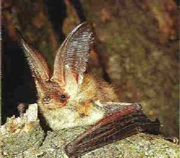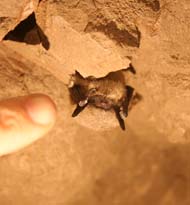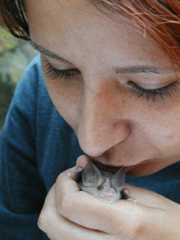
At first, the aim of the club was to escape the normal, the city and the day to day life. Then came cave photography, a way of showing people the beauties of the undergound earth.
Without knowing, we were caught in this world of speleology and we continued to explore and map, we desired more and more. We found out that caves have to offer more than breath taking pictures. We discovered The Bat.
One upon a time there was an emperor.
One day, he left the castle to visit his kingdom and he arrived in a small village under the wicked rule of a witch. She lived in a cave and the villagers were afraid to enter.
Curious to see who dares to go against his rule and not listening to the people, the young emperor entered the cave. The angry witch turned the traspasser into a mouse and called the cat to eat him. As we all know, the cat and the mouse don't really get along, the scared little mouse ran and ran, until he reached a church.
Tired, hungry and thristy, the mouse enters the altar and ate the holy bread and drank the holy water. Doing so, the emperor-mouse was "cleaned" of all his sins.
After this, he climbed in the bell tower to rest. Little did he know that villagers are used to ring the bells at specific times. Like everytime, the priest came to ring the bells that help villagers scare bad spirits away.
At the first beat, the little emperor-mouse thought his ears will explode. With each beat his body slowly changed. The ears were longer, the arms and legs united... He was slowly growing wings.
At the last beat, the new creature was no longer a human or mouse, but A BAT that flu away into the night.
Interesting facts about bats
- The bat is part of human culture since ancient times, as an evil or benefic creature. We can see them on cave walls (around 30.000 years ago), in egiptian sculpures (around 2.000 – 2.400 years ago), in precolumbian America, in the traditions of the Orient...;
- The bat always had a symbolic place in medicine, pharmacy, superstitions, beliefs and traditions, sculpture, paintings, theater, poetry, cinema, industry, comerce, etc.
- The bat is a natural "pesticide", with significant weight in insect pest control.
- The bacteria from guano can be used to create soap, antibiotics and Bacteriile din guano pot fi folosite pentru fabricarea sapunului, antibioticelor, agricultural fertilizers.
- Bats help sowing cut forests and pollinate plants.
- They are among the "noisyest" creatures on Earth.
- They occupy a quarter of mammals.
- Bats can form collonies up to millions of specimens – the largest collony has about 20 million and can be found in Mexic.
- Bats don't build nests.
- Bats are warm blooded and nurs their young until they can feed themselves. Babies up to 4 to 6 weeks, can not fly, and they are born with no fur or eyes.
- The world's smallest bat can be found in Thailand, weighing 1.5 – 2g with a wingspan of 15cm. The smallest in Europe is Pipistrellus pipistrellus and can easily fit in a match box.
- The largest bat is kalongul from Indonesia, weighing 1.5kg and wingspan of 2m.
- All Euroepan bats are insectivors.
- One bat can consume 600 mosquitos in one hour.
- Thanks to their echolocation system, they cannot get caught in human hair.
- Tropical bats are the key to the local ecosystem, because they spread the seeds of local plants.
- The heart of a bat is 3 times larger than of a mammal his size.
- Males form harems.
- Birth collonies totally exclude males. Mother and baby recognise each other first by sound than by smell.
- Bats have lived on this planet for over 50 million years.
So we have loved and the adopted the bat logo, and he still is with us after almost 30 years. Thanks to bats we also started protection and knowlege projects and activities. We would like to make them aquinted to moro and more people so that they can come to respect, even love them like we do.







